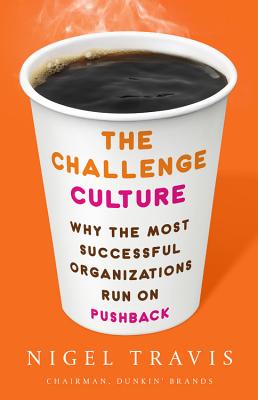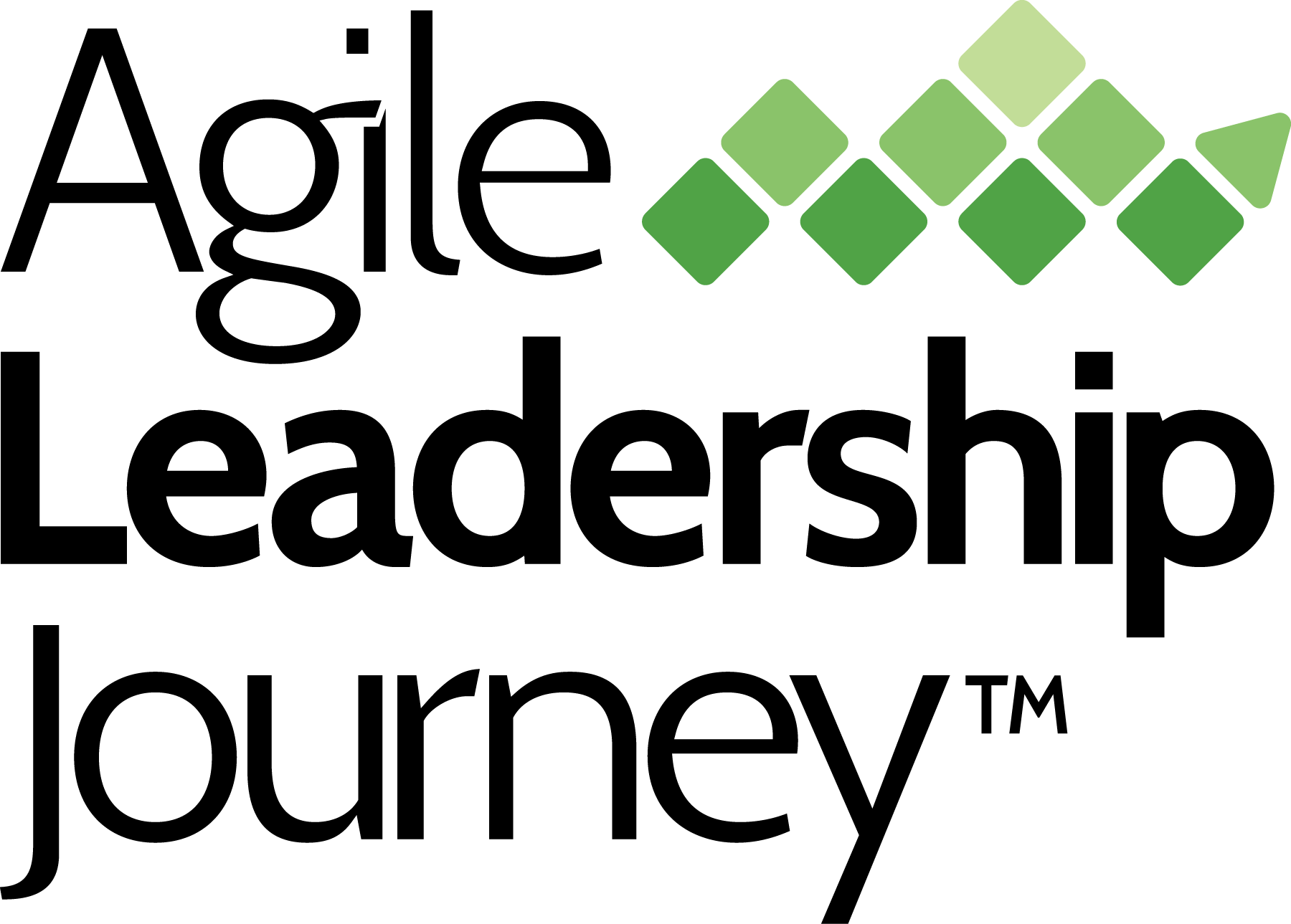What We're Reading — The Challenge Culture by Nigel Travis
Every six weeks or so, we host a book club inside of our Agile Leadership Journey guide community. We select a book that feels relevant to our work, our lives, and our own leadership journeys, then we gather to talk about it.
Our most recent selection was
The Challenge Culture: Why the Most Successful Organizations Run on Pushback by former Dunkin’ Brands CEO Nigel Travis.
About The Challenge Culture, from the book jacket:
“We live in an era in which successful organizations can fail in a flash. But they can cope with change and thrive by creating a culture that supports positive pushback: questioning everything without disrespecting anyone.
Nigel Travis has forty years of experience as a leader in large and successful organizations, as well as those facing existential crisis-such as Blockbuster as it dawdled in the face of the Netflix challenge. In his ten years as CEO and chairman of Dunkin' Brands, Travis fine-tuned his ideas about the challenge culture and perfected the practices required to build it. He argues that the best way for organizations to succeed in today's environment is to embrace challenge and encourage pushback. Everyone-from the new recruit to the senior leader-must be given the freedom to speak up and question the status quo, must learn how to talk in a civil way about difficult issues, and should be encouraged to debate strategies and tactics-although always in the spirit of shared purpose. How else will new ideas emerge? How else can organizations steadily improve?
Through colorful storytelling, with many examples from his own career-including his leadership in turning around the fear-ridden culture of the London-based Leyton Orient Football Club, of which he is part owner-Travis shows how to establish a culture that welcomes challenge, achieves exceptional results, and ensures a prosperous future.”

We selected this book because there were parts of it that align with some of the things we teach: how control and collaboration influence creativity and competition in an organization, leaders who are open to the expertise of others can make better decisions, and creating a culture of psychological safety encourages better participation among teams. So what did we think? Our conversation covered several topics.
What is a challenge culture?
At its most simple, we defined a challenge culture as the ability for everyone in an organization to speak out and take responsibility for the progress of the organization. Travis describes it as an openness to have the status quo challenged by anyone, at any level, through a process of civil discourse. It’s always intended to be positive and inclusive.
How does this concept fit into the culture values grid?
One of the first questions we explore was which quadrant of the culture grid does this practice fit into? When looking at the four values represented in the grid — collaborate, compete, create, control — we saw that the idea of challenge culture could be represented in all four quadrants in the model. Challenge culture incorporates creativity (disruption), competition (push), collaboration (communication), control (high standards). Requiring challenge can be a control mechanism or incite competition, whereas leveraging challenge can encourage creativity or collaboration.
We were also able to see how a challenge culture could become dysfunctional in every quadrant: over consensus, over-disruption, over-results-orientation, over-efficiency. Too much challenge can hinder the ability to compete in the market because it slows down production. It can keep people from presenting creative ideas for fear of being dismissed. A fear of challenge itself may discourage people from collaborating with others, and it could be seen as a loss of control.
We talked about how a challenge culture appears to limit the freedom to experiment and implement ideas. One of the things we teach in our
Agility in Organizations series is the idea of conducting experiments, evaluating, learning, adjusting and experimenting again. How does the concept of experimentation work in a challenge culture? Does this inadvertently create a permissive culture, where everyone is waiting for someone to approve action, or at the very least, challenge forward progress?
A collaborative culture, by its very nature, is not very challenging. As a more “don’t rock the boat” atmosphere, a collaborative culture is one that says, “there are no bad ideas!” Additionally, collaboration cultures have tendencies to be more set in their ways and require decision-making by quorum — thus may have more difficulty challenging the status quo.
It all comes back to the fact that challenge culture fits into all four quadrants, almost as an additional layer that brings the model into three dimensions. “Challenge culture means decentralized authority [control], open communications [collaborate], small corporate center, avoiding bureaucracy, strong performance orientation [compete] , no compromise on high management standards, development of people [create], tolerance of different personalities and styles, and action orientation (pg 70).”
Alistair Cockburn says, “Agility is a culture of listening, questioning and reflecting.” However, our agile community is very much the opposite — it’s about “knowing and challenging others and ourselves.” Does challenge culture support agile values?
Is challenge culture an agile mindset?
Challenging your own culture, biases, and ways of working is central to agility thinking. It’s a practice of improving your self-awareness and adaptiveness and allowing yourself to remain open to new ideas. This supports the ideas Travis presents in this book. Not allowing yourself to settle into an expert mindset is what allows challenge culture — and leadership agility — to be successful.
We also saw parallels to the
last book we read as a community, Adam Grant’s
Think Again. Grant’s idea of thinking like a scientist ties really well into the challenge culture. By avoiding the mindsets of preachers, prosecutors, and politicians naturally opens you up to being curious and inviting challenge.
In a challenge culture, the focus is on people as much as it is ideas or processes. In order to influence change, you may see people challenging the culture itself. As as leaders, we have to be open to being wrong and ready to think about things differently.
How do you build a “challenge culture” without getting confrontational?
As mentioned before, Travis is not championing the idea that things must be confrontationally challenged. However, our group saw that “I invite you to challenge me” can be a slippery slope into confrontational dissent. Does challenge culture work for all personalities or might it push some away? Challenging people in a public way may be humiliating, so there is also a need for sensitivity in the way we challenge.
Additionally, one of the ideas Travis presents is the idea of questioning everything. We questioned how sustainable this is. If everything is questioned, are you ever able to move forward into execution? Doesn’t the nature of questioning everything invite confrontation? Pete referenced a podcast episode (The Paradox of Change), where the idea that resistance to change is actually a celebration of the status quo. And celebrating what’s working is very healthy.
We also discussed how an expectation of challenge opens up to performative action — challenge for the sake of challenge, rather than authentic inquiry. This creates a paradox in which teams inadvertently develop an output-driven culture, which isn’t always based on data. How does this kind of culture drive change and growth?
Building Psychological Safety
What sort of atmosphere does this challenge culture create? In order for a challenge culture to work, limits must be clearly defined and psychological safety must be present.
Challenge culture appears to match the fourth stage of psychological safety — challenger safety. It creates the most opportunity to build agility and accept change. Additionally, it provides an opportunity for inclusion. By opening up to challenges, you are allowing anyone from any level to have a voice.
We discussed the flip side of this as well. Mike offered a challenge to the importance of psychological safety, adding that too much focus can lead a team into complacency. He asked, “where is the line between a challenge culture and someone who needs to be disciplined?” A shift too far into psychological safety has the potential to enable a rough edge to be disruptive. Don’t confuse psychological safety with social security, or creating a “marshmallow culture,” where no one is held accountable for negative contributions.
Takeaways
In all, it was a good discussion. There were ideas that aligned with our leadership beliefs and others that challenged our biases. Overall, these were the things that we decided to focus on:
Practice agile listening. Along with listening with your eyes, ears, and heart, you must listen with your mind. “Listen with the will to learn” (from Scrum, Agile and the Art of Active Listening)- Question your challenge. Is it helpful or performative?
- Be selective about what to challenge. We disagreed that we should “challenge everything.” Pick your battles.
- Challenge yourself. Break out of your own assumptions by challenging what you think you know.
Our next book is
Diagnosing and Changing Organizational Culture: Based on the Competing Values Framework by Kim Cameron and Robert Quinn
Contributors to this discussion
Pete Behrens,
Eunice Brownlee,
Rashmi Fernandes,
Nis Holst, and Mike Leber.






